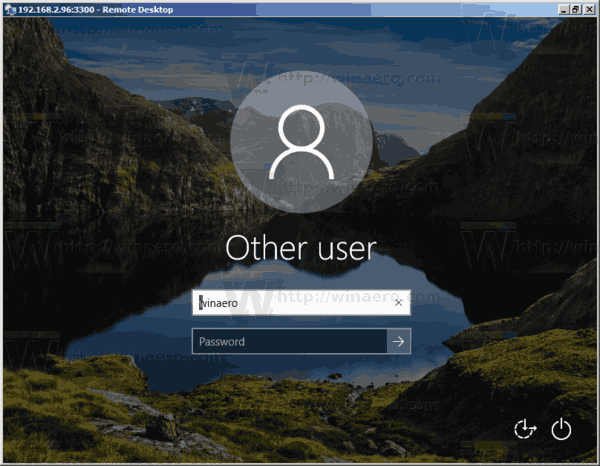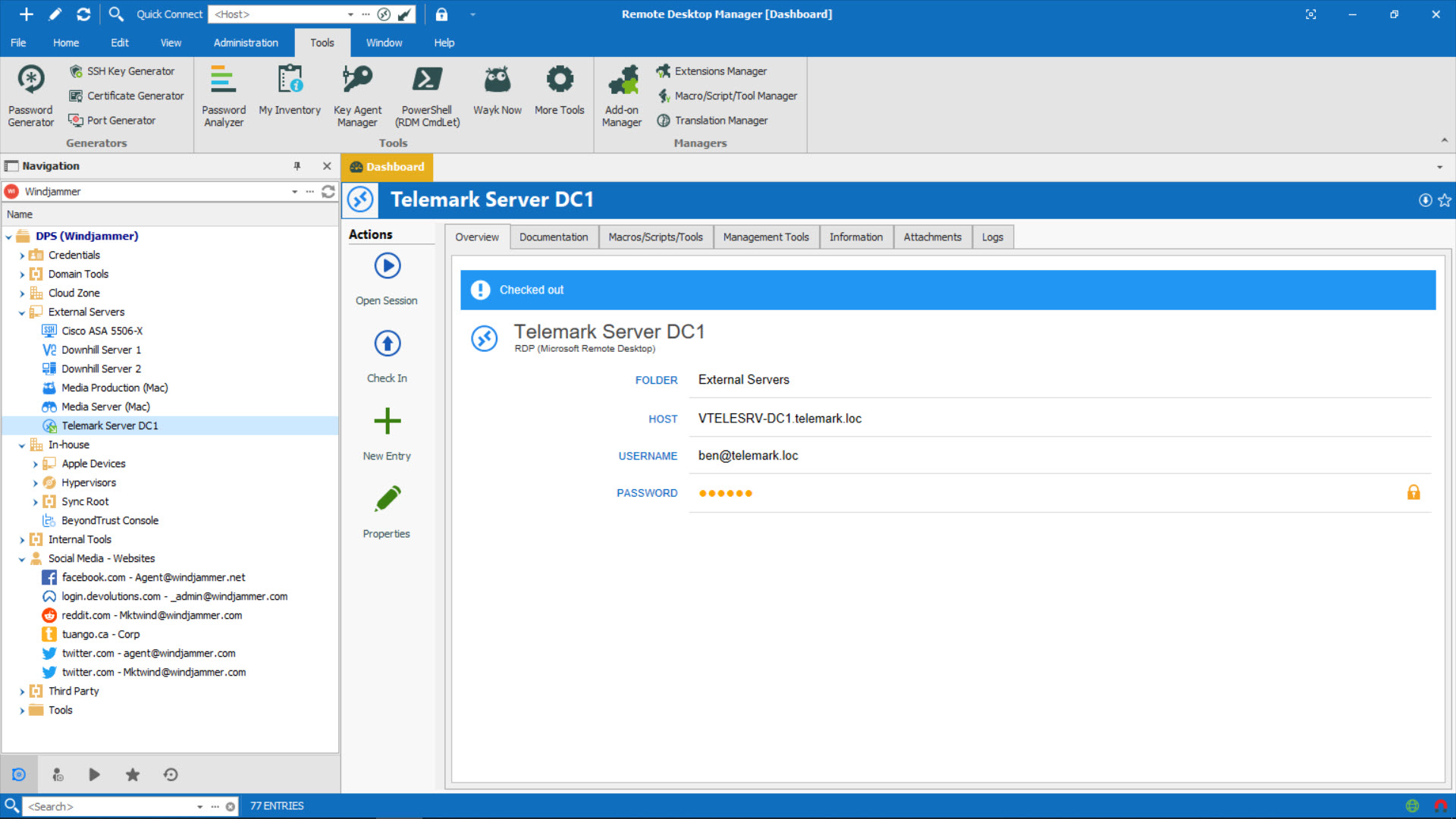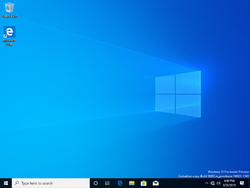What is an RDP Client?
Remote Desktop Protocol (RDP) is a connection protocol developed by Microsoft to provide users with a graphical interface while connected to another computer over a network connection. The connecting user must deploy an RDP client software, while the receiving computer must deploy RDP server software.

There are several RDP Clients for Windows 10, Windows 8.1, Windows Server 2019, Windows Server 2016, and Windows Server 2012 R2. The available client apps for different clients are listed below:
| Client | App |
| Windows Desktop | Windows Desktop client |
| Microsoft Store | Windows 10 client |
| Android | Android client |
| iOS | iOS client |
| macOS | macOS client |
| Html 5 | Html5 client |
As with earlier versions of the Windows operating system, Windows 10 and 8 restrict the use of Microsoft’s Remote Desktop Protocol (RDP) to one remote connection, preventing users from making multiple RDP connections. The issue with multiple Remote Desktop Sessions on Windows 10 and 8. You'll need Windows 10 Pro or Enterprise to enable this feature. Begin by opening the Settings app (Win+I keyboard shortcut) and clicking the 'System' category. At the bottom of the menu on the.
The RDP servers are built into Windows operating systems and can be enabled through the Server Manager panel.
Microsoft Remote Desktop Assistant
You can download and install Microsoft Remote Desktop Assistant, and use it to enable Remote Desktop Services, hence allowing other devices to access your PC. Follow the steps mentioned below:
- Download and install the Microsft Remote Desktop Assistant after accepting the terms and conditions.
- Click Accept and a Welcome screen appear. Click Got it.
- Click Get Started on the screen that appears next. It lists down all the changes that the tool will carry out on your computer including:
- Enabling remote connections to your PC.
- Keeping your PC awake, making it available for connections.
- Changing your Firewall rules to allow Remote Desktop connection.
- Scan the QR code that appears on the screen next, save the connection as a file, or choose your option to proceed further to enable connection using Remote Desktop.
Your computer is now ready to be accessible from other devices. Install and use Microsoft Remote Desktop client on the device that you will use to connect to your PC.
How does Microsoft Client work?
For the RDP client to work, the receiving machine must have Remote Desktop connections enabled. There are 2 most common ways to enable the RDP connection:
1. Right-click on the Personal Computer icon on your desktop, click on Properties from the drop-down list, and then select Remote settings from the list on the left.
2. Navigate to your Start Menu and go to Windows Settings, click on the System icon, and from the list on the left select Remote Desktop and enable it.
Latest Windows RDP Client

Due to the Windows Virtual Desktop (WVD), Microsoft is working on patching some bugs that occurred from using their RDP Client to connect to WVD instances. Two of the RDP Client (1.2.605 & 1.2.535) releases were mainly focused on fixing bugs instead of introducing new features.
Windows 10 Enterprise Rdp Limit
The latest 1.2.1104 update of Windows RDP Client has the following changes:
- Support for Windows Virtual Desktop Spring 2020 update by updating the automatic discovery logic for the Subscribe option. Customers who have the Spring Update resources do not need to provide consent for the Fall 2019 release.
- The scale factor of high-DPI devices has been improved up to 400%.
- The issue where disconnect dialog did not appear has been resolved.
- The issue where the command tooltips appeared longer than expected has been fixed.
- The crash that occurred when trying to subscribe immediately after a refresh has been fixed.
- The crash that occurred when parsing date and time in some languages has been fixed.
An enhanced RDP Client
Parallels Client, is a completely free RDP Client. It leverages RDP technology, allowing users to instantly connect to either simple RDS infrastructures or Parallels RAS Farms.
It’s an intuitive RDP client that enables multi-tasking on applications and desktops. Multiple connection settings can be stored and utilized so users can keep workspaces docked under the same application window (or undock them to work in another window).
Moreover, features not supported by the Microsoft RDP Client—such as drag and drop, multiscreen support, zoom, client group policy and more—are implemented to provide a top-class user experience.
The mobile client enables all native gestures of iOS and Android, offering the best mobile experience on the market. Touch ID and passcode features are available to increase data security.
References
Remote Desktop Protocol | https://en.wikipedia.org/wiki/Remote_Desktop_Protocol
What’s new in the Windows Desktop client | https://docs.microsoft.com/en-us/windows-server/remote/remote-desktop-services/clients/windowsdesktop-whatsnew
Microsoft Remote Desktop Client | https://www.parallels.com/blogs/ras/microsoft-remote-desktop-client/
5 Best Remote Desktop Connection Managers | https://activedirectorypro.com/rdp-connection-manager/
Get Microsoft Remote Desktop Client | https://www.microsoft.com/en-us/p/microsoft-remote-desktop/9wzdncrfj3ps
Setting up a remote desktop allows you to access your computer wherever you are and control it as if you were directly in front of the keyboard. By using the built-in Remote Desktop Connection app in Windows 10, you can troubleshoot issues, access files, and so much more. Here’s how to set up a remote desktop in Windows 10 and how to remotely access another computer over the internet.
How to Set Up Remote Desktop Windows 10
To set up a remote desktop in Windows 10, go to Settings > System > Remote Desktop. Then turn on the slider for Enable Remote Desktop. Next, search Settings for Allow an app through Windows firewall and enable the Remote Desktop app for Private and Public.
Note: You can only run the Remote Desktop Connection app if you are using Windows 10 Professional or Enterprise. If you are using Windows 10 Home edition, check out our guide on how to use Quick Assist to remotely control a computer.

- Click the Windows Start button. This is the button with the Windows logo in the bottom-left corner of your screen. Do this from the host computer (or the computer you will be trying to access remotely).
- Then click Settings. This is the gear-shaped icon just above the power button.
- Next, click System.
- Then click Remote Desktop in the left sidebar. You can find this by scrolling down. It is the icon that looks like greater than and less than signs pointing at each other.
- Next, click the slider next to Enable Remote Desktop. This will cause a new window to pop up.
- Then click Confirm. A pop-up box appears asking you if you would like to enable remote desktop. It also reminds you that doing so will allow you and other users in your User accounts to connect to the PC remotely. Then you will need to change your firewall settings in order to access another computer over the internet.
- Next, type firewall into the search bar of the Settings window. You can do this by clicking the search box that says Find a setting at the top of the left sidebar. Once you type firewall, you will see search results populated under the search bar.
- Then choose Allow an app through Windows firewall. If you don’t see this option, click Show All, and then select it from the list.
- Then click Change settings. Initially, the apps and the checkboxes beside them will be grey or disabled. Once you click Change settings, they will turn black and become enabled.
- Tick the Private and Publiccheckboxes to the right of Remote Desktop. Make sure both that the boxes under the Private and Public columns are checked.
- Finally, click OK.
Once you enable your remote desktop and allow the app to communicate through your firewall, you can access that computer over the internet. Here’s how:
How to Remotely Access Another Computer Over the Internet
There are two ways you can remotely access another computer over the internet – depending on whether you’re on the same network or not. If you are accessing another computer within the same network, you just need to know the PC name. If otherwise, you need to know your public IP and set up port forwarding.
How to Remotely Access Another Computer Over the Internet Within Your Network
To remotely access another computer within your network over the internet, open the Remote Desktop Connection app and enter that computer’s name, and your username and password.
- Click the magnifying glass icon in the bottom-left corner of your screen. Do this from the computer you want to access over the internet.
- Then type About into the search bar and click Open.
- Next, copy your computer’s name. You can find this next to Device name. You can either write this name down, or copy and paste it into a text document, an email, or any other method that you want.
Note: If this name is too complicated, you can click the Rename this PC button below. This lets you choose your own name for your PC.
- Then open the Windows search bar and type remote desktop connection. This is the magnifying glass icon in the bottom-left corner of your screen.Do this from the client computer or the computer that you will use to establish the remote connection.
- Next, click Open.
- Then click Show Options. You can see this in the bottom-left corner of the window.
- Next, enter the computer’s name. This is the name that you copied down in the previous steps.
- Also, enter the username. If this information is filled in already, make sure it is correct. You can find your username by going to Settings > Accounts. Then you will see your username under your profile image.
- Then click Connect.
Note: You can also change additional settings by clicking the Display, Local Resources, Experience, and Advanced tabs.
- Next, enter your computer’s password and click OK. This is the password that you use to sign in to the computer when you are on the lock screen.
Note: You might encounter a prompt asking you if you want to connect even if the identity of the remote computer cannot be identified. Just click on Yes.
- Finally, wait for the remote connection to be configured. After the step above, you will see a green progress bar. Wait for it to complete. Briefly, you will see a black window which turns to blue. Once the remote connection is successfully established, you will see a view of the computer you’re trying to access.
Remote Desktop Windows 10 Enterprise
How to Remotely Access Another Computer Outside Your Network
- Open a web browser. Do this from the host computer or the computer you will be trying to access remotely.
- Then type what is my IP into the address bar.
- Next, copy the public IP address listed. Your public IP address will be a series of numbers separated by periods.
Note: Do not share your public IP address with anyone you don’t trust. They can use this information to hack your computer and steal your personal information, such as bank details.
- Then open TCP port 3389 on your router. If you don’t know how to do this, check out our step-by-step guide on how to port forward.
Note: You should also set a static IP address for the computer you are trying to access. If you want to know how to set a static IP address for your Windows 10 PC, check out our step-by-step guide here.
- Next, open the Remote Desktop Connection app. Do this from the client computer (or the one you will use to remotely control the host computer).
- Enter your public IP address in the Computer field. This will be the public IP address you copied down earlier.
- Then click Connect.
- Enter your credentials. On the Windows Security page, type in the username and password of your remote server.
- Click OK.
Note: You might encounter a prompt asking you if you want to connect even if the identity of the remote computer cannot be identified. Just click on Yes.
- Finally, wait for the remote connection to be configured. After the step above, you will see a green progress bar. Wait for it to complete. Briefly, you will see a black window which turns to blue. Once the remote connection is successfully established, you will see a view of the computer you’re trying to access.
If you’re looking for a less complicated way of accessing your computer remotely, check out our article on how to remotely control a Windows 10 or Mac computer.

Was this article helpful?
Related Articles

Comments are closed.